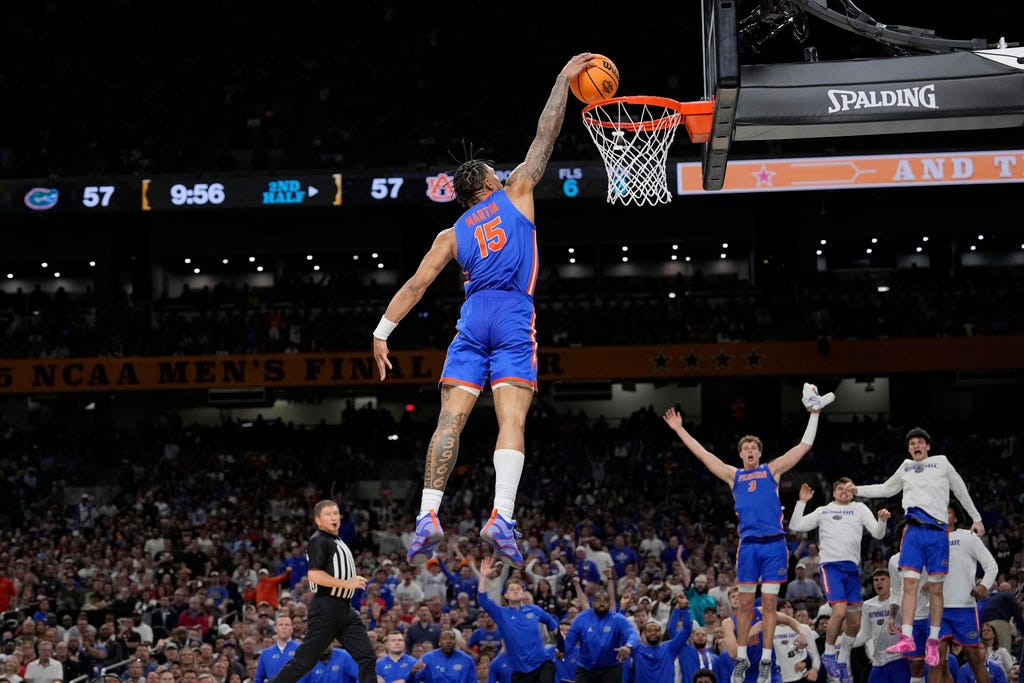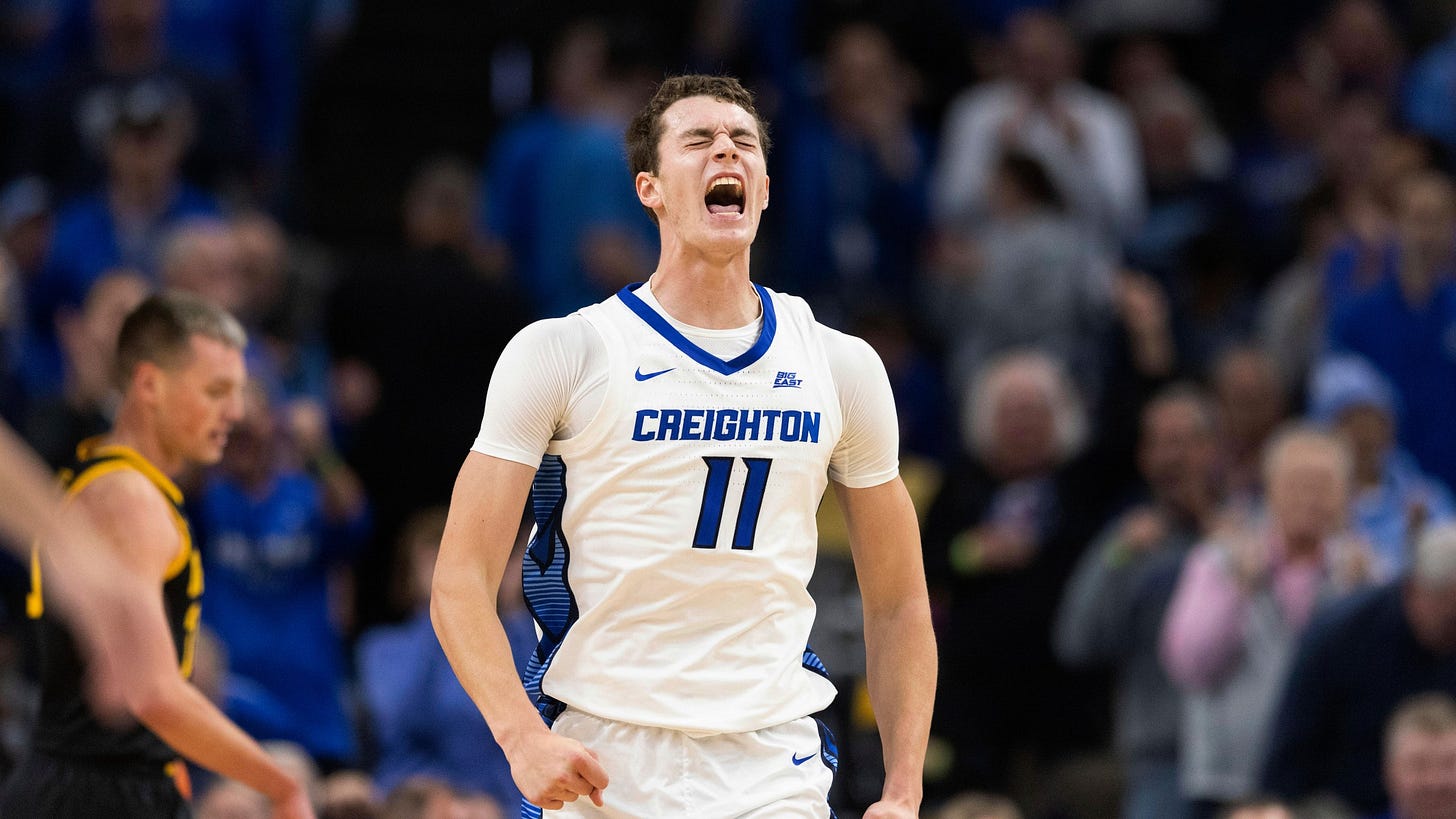The college hoops fan's view of the 2025 NBA Draft: Part Two
Thoughts on every pick from Thursday's strange second round
Every preview of Thursday night’s second round dwelled on the historically weak remaining talent pool, another downstream effect of the NIL era: Many top college players-slash-marginal pro prospects would rather max their NIL earning years before they risk flaming out on a non-guaranteed second-round contract. Guys no longer jump for the hell of it. Decisions are almost always reasonable.
It was yet another way NIL, and by extension the transfer portal, rhetorically loom over the entire basketball landscape. It’s not just college anymore.
Not that those previews were wrong. Thursday’s second round did feel strangely quiet — even eerie. There were a few exciting moments (Javon Small’s grandpa being the proudest person in human history was sweet) and a few selections we wholeheartedly believe everyone will regret passing on in five years’ time (namely: Alijah Martin, Tyrese Procter, more on which below). But the procession was otherwise perfunctory. Or maybe we just missed Kendrick Perkins?
Some of that vibe was just the nature second round. It’s never as exciting, obviously, especially when all of the buzzy energy of the first round is contained to its own night.
Still, you could feel the absence of players who might have been here a few years ago: Darrion Williams, Boogie Fland, Ja’Kobi Gillespie, Yaxel Lendeborg, and many more — great college players who once would have flung themselves onto the only conceivable path to earning money from their basketball talents. Instead, they’ll be playing college basketball in 2025. It’s great news for us … even if it made Thursday night feel a bit weird.
Either way, like yesterday, below are thoughts on every pick of the 2025 NBA draft. We really do think Alijah Martin is going to be good.
No. 31: Rasheer Fleming, Minnesota Timberwolves (traded to the Phoenix Suns)
Fleming is a fun counterpoint to the preceding narrative.
Amid NIL’s moment of rhetorical dominance, Fleming is a throwback: He came to St. Joe’s as a mostly unknown recruit — his other offers were Temple, Siena, St. Francis (PA) and Albany — scuffled a bit as a freshman, and then broke out as a dynamic sophomore. Players with Fleming’s size, interior finishing, efficiency rates, and perimeter shooting get noticed; NBA scouts paid attention, and plenty of monied high-major coaching staffs did, too. But instead of maxing out his value on the open market or jumping into the draft too early, Fleming went back to St. Joe’s for a third season — by far his best.
Now he’s on an NBA roster.
There is nothing morally wrong with players transferring teams and getting their money, but it has become so common lately that people sometimes talk like every talented college veteran has played for four different schools. The great fundamental strength of the college game remains the largeness of its tent: You can play fast. You can play slow. You can go nuts in the portal. You can develop from within. Flemings are rarer now, sure. But they are far from extinct.
No. 32: Noah Penda, Boston Celtics (traded to the Orlando Magic)
We’ll punt here, as we will with most other international prospects — we haven’t seen the kids play, this is a college basketball newsletter in the US of A, etc. etc. But really quickly: What are they putting in the water in France? Why does every French NBA prospect have the wingspan of an Airbus? Is all the nuclear power stretching people’s skeletons? There’s Victor Wembanyama, obviously. But even the 6-foot-7 Penda, a second-round flyer the up-and-coming Magic will hope can maybe stretch the floor, has a 7-foot wingspan! What the hell is that?
No. 33: Sion James, Charlotte Hornets
No. 34: Ryan Kalkbrenner, Charlotte Hornets
Let’s take these back-to-back picks together, not only because they both went to the Hornets, but because the selections are of a piece: these are, arguably, the best defenders at their respective positions in the draft.
Note the “arguably.” Khaman Maluach has a very real chance to be an elite NBA rim protector eventually, beyond anything Kalbrenner has the chance to become. But right now? Kalkbrenner is already dominant the rim, and has been forever. He was the primary reason Creighton ranked an average of 16th in Division I in opponent two-point field goal percentage for the past four seasons. (They did this while never ranking worse than fourth in opponent free throw rate, by the way: Kalkbrenner destroyed good looks while basically never fouling.) His movement in space and ball-screen coverage could be an issue in the NBA, though it improved later in his Creighton tenure, and his ability to do more than finish lobs around the rim is anyone’s guess. But if you want a really tall dude to come in for a few minutes per game and shut off easy looks at the rim, well, Kalkbrenner can do that as soon as tomorrow.
Sion James is similar. Whatever he lacks in offensive guile he more than makes up for in defensive strength. You could imagine James finding his place in the league the same way Lu Dort (or, to a less personally abrasive extent, Dillon Brooks) first did: By being so useful against opposing guards the offense stuff didn’t really matter. The Hornets have a weird roster, but if they wanted to add size and bench defense, they managed to do that in the span of 10 minutes Thursday night.
No. 35: Johni Broome, Philadelphia 76ers
Keep reading with a 7-day free trial
Subscribe to Buzzer by Eamonn Brennan to keep reading this post and get 7 days of free access to the full post archives.



